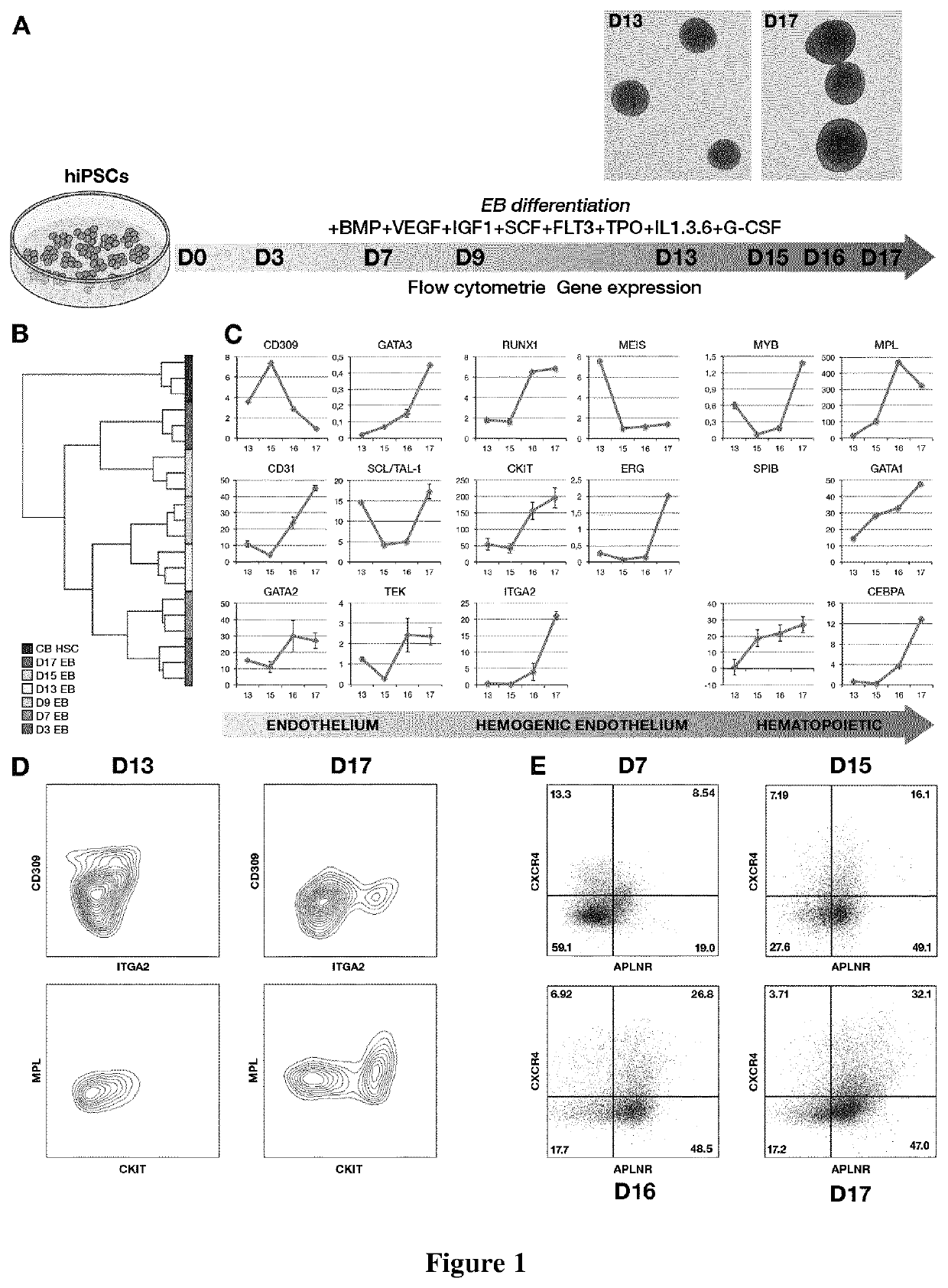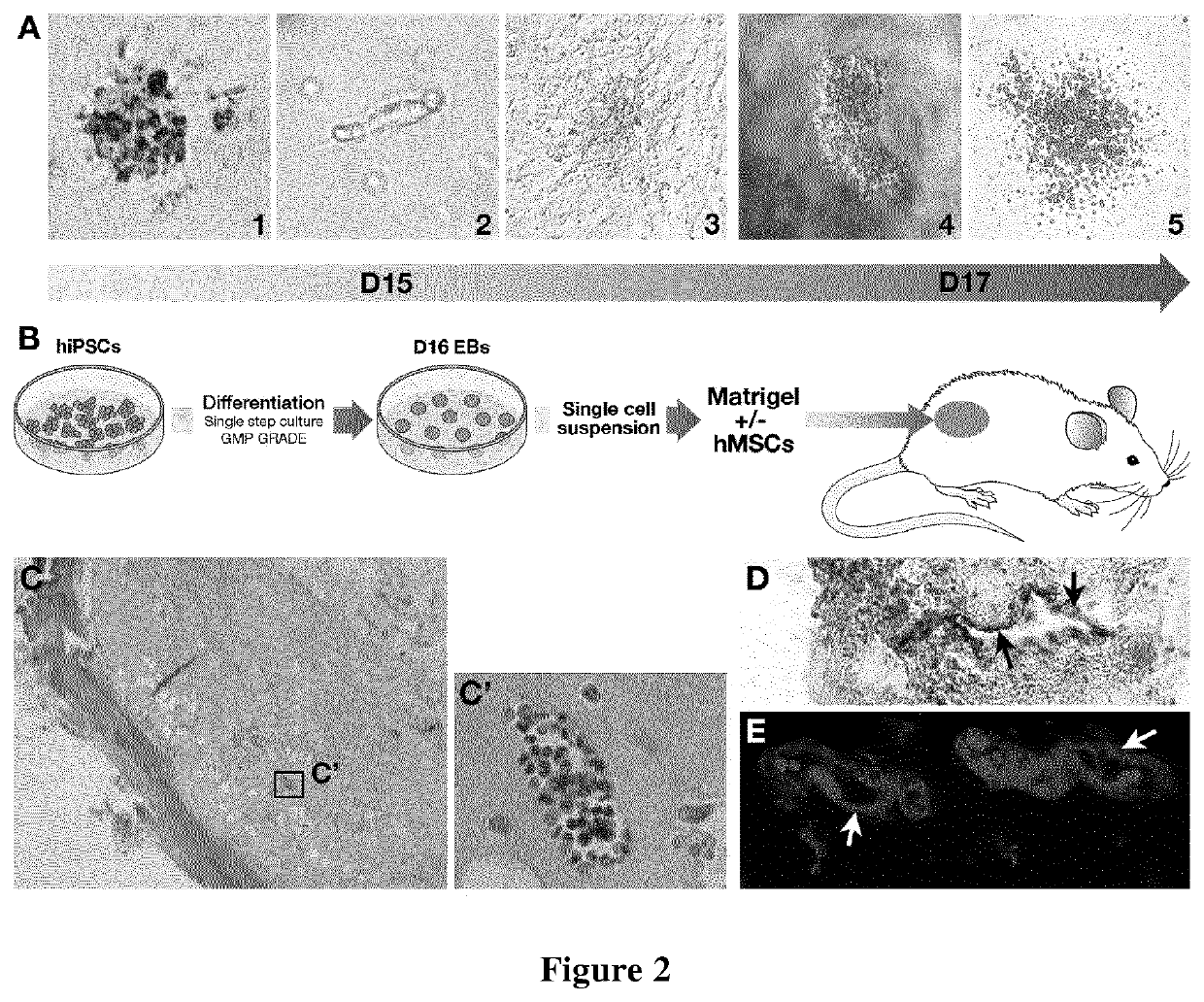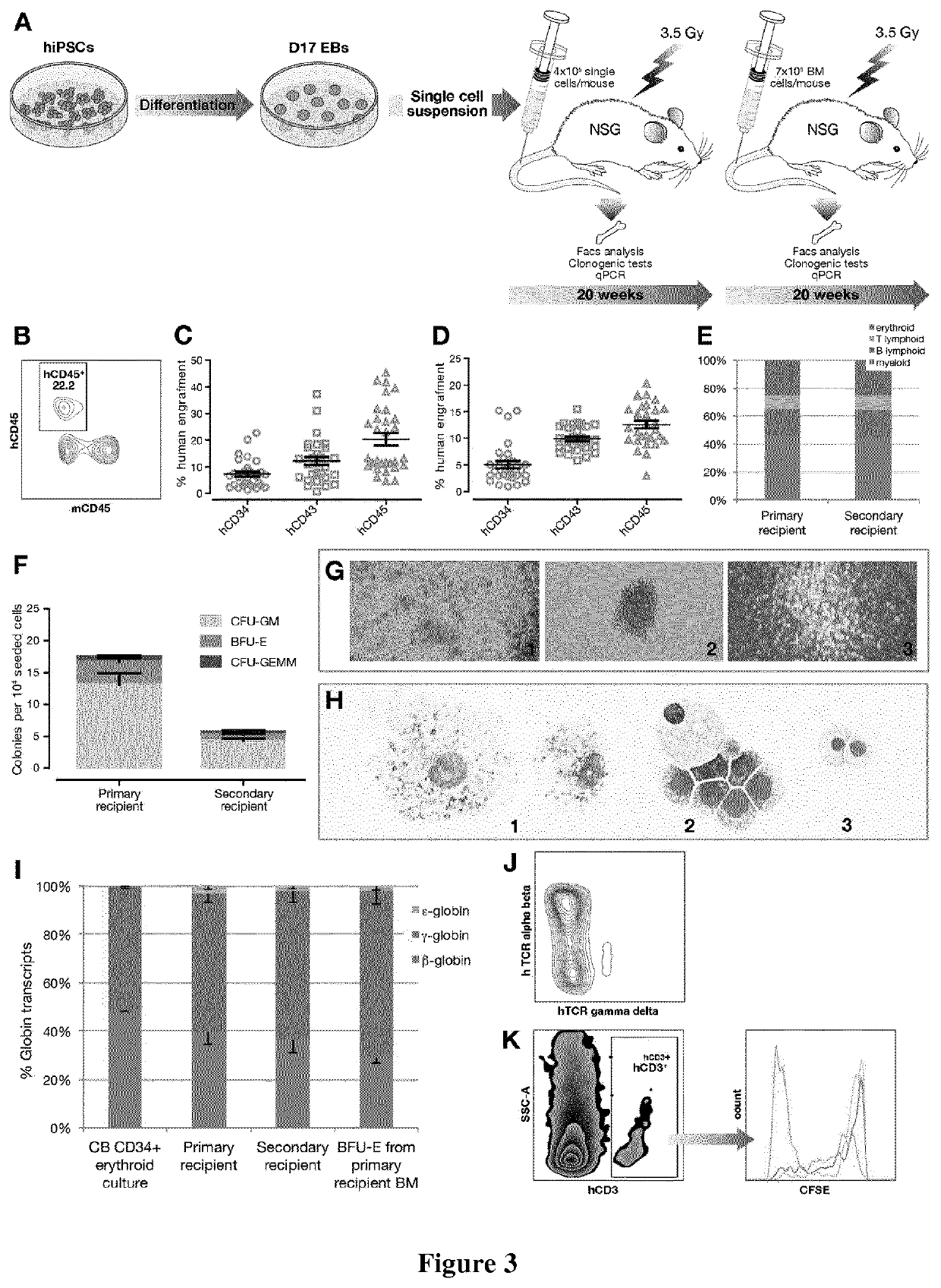Methods of improving hematopoietic grafts
a technology of hematopoietic grafts and hematopoietic cells, applied in the field of medicine, can solve the problems of reducing the multilineage and engraftment potential of cells, plasmids encoding oncogenes, and the utilization of non-gmp-grade feeder cells into recipient cells, so as to improve the efficiency of hematopoietic transplantation
- Summary
- Abstract
- Description
- Claims
- Application Information
AI Technical Summary
Benefits of technology
Problems solved by technology
Method used
Image
Examples
example 1
[0268]Materials and Methods
[0269]hiPSC Amplification
[0270]The study was conducted using three different hiPSC lines: the FD136-25, reprogrammed with retroviral vectors and Thomson's combination (endogenous expression of Oct4, Sox2, Nanog and Lin28); the Pci-1426 and Pci-1432 lines (Phenocell) reprogrammed with episomes (Sox2, Oct4, KLF, cMyc). hiPSCs were maintained on CellStart (Invitrogen, Carlsbad, USA) in TESR2 medium (Stem Cell Technologies, Bergisch Gladbach, Germany) and the cells were passaged 1:6 onto freshly coated plates every 5 days using standard clump passaging with TRYple select (Invitrogen).
[0271]EB Differentiation
[0272]After 24 h, cells were transferred into differentiation medium containing 24 ng / mL of SCF, 21 ng / mL of TPO, 21 ng / mL of FLT3L, 194 ng / mL of BMP4, 200 ng / mL of VEGF, 50 ng / mL of IL3, 50 ng / mL of IL6, 5 ng / mL of IL1, 100 ng / mL of GCSF, 5 ng / mL of IGF1 (PeproTech, Neuilly-sur-Seine, France). Medium was changed every other day. EBs were dissociated on day...
example 2
[0326]Materials and Methods
[0327]hiPSC amplification, EB differentiation, assessment of human cell engraftment, T cell maturity and functionality assay, quantitative PCR were performed as described above.
[0328]Cell Sorting
[0329]Dissociated EB cells were stained with the antibody CD110-PE (MPL) or CD135-PE (FLT3) then re-stained with PE-MicroBeads (Miltenyi) and finally sorted with the MACS® cell separation device.
[0330]Mouse Transplantation
[0331]NOD.Cg-PrkdcscidI12rgtm1Wjl / SzJ (NSG) (Charles River, L'Abresle, France) were housed in the IRSN animal care facility. All experiments and procedures were performed in compliance with the French Ministry of Agriculture regulations for animal experimentation and approved by the local ethics committee.
[0332]Mice, 6-8 weeks old and raised under sterile conditions, were sublethally irradiated with 3.5 Grays from a 137Cs source (2.115 Gy / min) 24 h before cell injection. To ensure consistency between experiments, only male mice were used. Prior to...
PUM
| Property | Measurement | Unit |
|---|---|---|
| volume | aaaaa | aaaaa |
| total volume | aaaaa | aaaaa |
| cell surface antigen | aaaaa | aaaaa |
Abstract
Description
Claims
Application Information
 Login to View More
Login to View More - R&D
- Intellectual Property
- Life Sciences
- Materials
- Tech Scout
- Unparalleled Data Quality
- Higher Quality Content
- 60% Fewer Hallucinations
Browse by: Latest US Patents, China's latest patents, Technical Efficacy Thesaurus, Application Domain, Technology Topic, Popular Technical Reports.
© 2025 PatSnap. All rights reserved.Legal|Privacy policy|Modern Slavery Act Transparency Statement|Sitemap|About US| Contact US: help@patsnap.com



